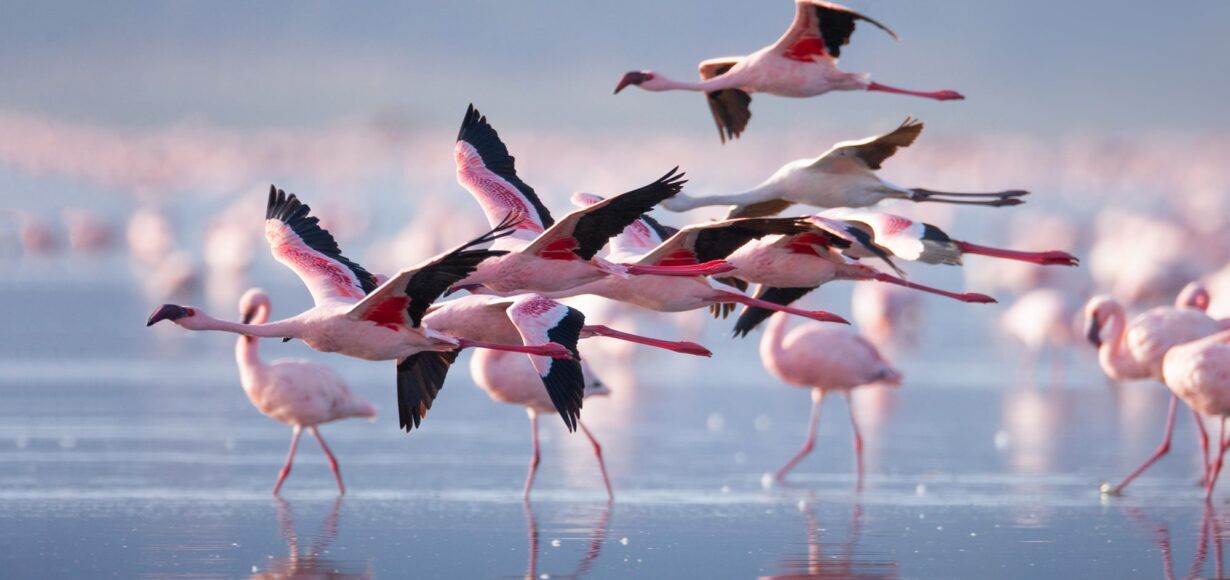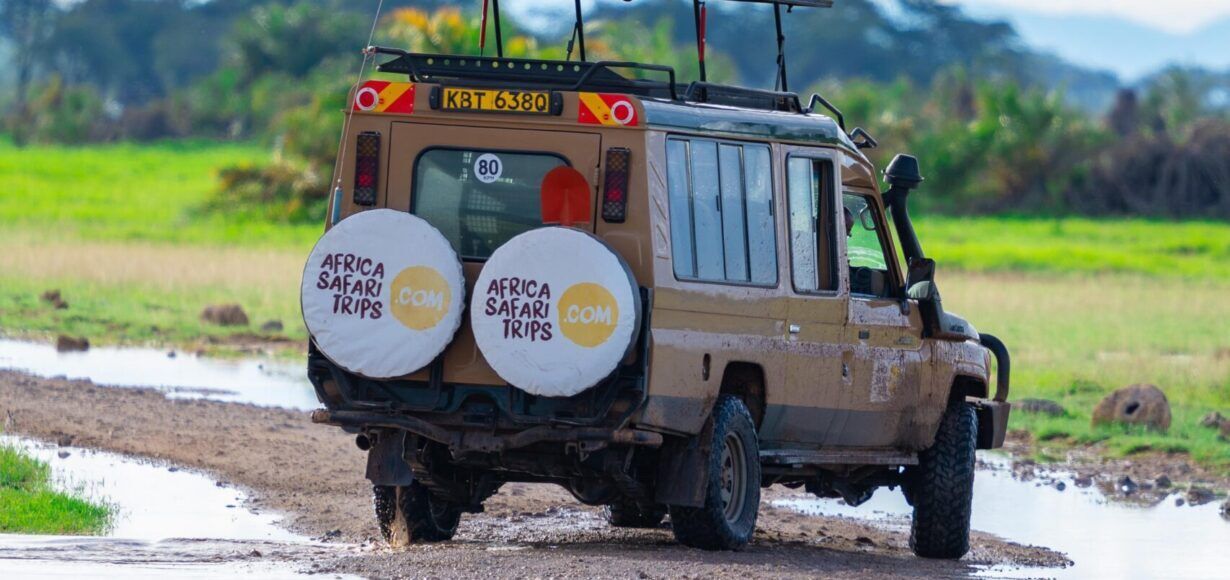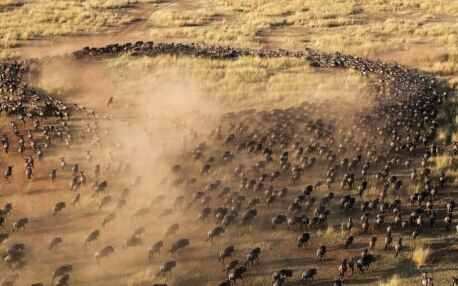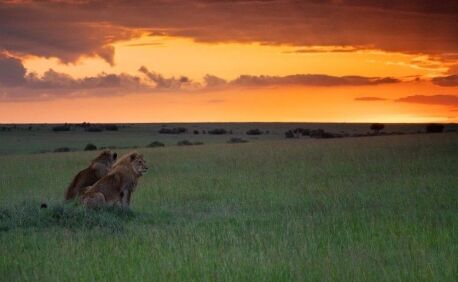
Wildebeest Migration
Kenia is the home of the world-famous Masai Mara and the captivating Wildebeest Migration. Every year, thousands of wildebeest and zebras cross the dangerous Mara river on the search for greener pastures. And you can witness this natural phenomenon.
The Wildebeest migration – or Great Wildebeest Migration – is the largest mammal migration in the world. It is a true spectacle to see 1,5 million wildebeests, 400,000 zebras, 12,000 elands and 300,000 Grant’s and Thomson’s gazelles thunder across the endless plains of the Masai Mara National Reserve. Especially since the wildebeests and zebras continuously make their distinctive sounds, making the migration recognisable from great distances.

As such, the epic river crossing at the Mara River is the highlight of the Wildebeest Migration. For some travellers it’s the sole reason to visit Kenya. With approximately 3000 crocodiles in the river, the crossing makes for a real feat for the herds and many of them die. Together with a multitude of leopards and cheetahs preying on the herds along the way, the migrations causes 250,000 wildebeests and zebras to die every year.
All year migration
The Wildebeest Migration is a natural phenomenon that doesn’t recognise borders. Starting in January the herds are in the southern part of the Serengeti National Park in Tanzania. Following the rains (and grassy plains) north, they pass the border with Kenya end of July. Here they subsequently migrate in thousands over the plains of the Masai Mara. Eventually they move back south, over the border back into Serengeti – a total distance of no less than 800 kilometers.


Great Wildebeest Migration safari itineraries
Get inspired by these wonderful itineraries and experience the wonder of the Great Wildebeest Migration.
When to go and what to expect
If you want to observe the great wildebeest migration in Kenya, we advise to come between July and October. The rest of the time, you can observe it in the other side of the border, in Tanzania !
July : From late July into August the herds start to arrive in Kenya. They are in search of food and water and need to cross the Mara River to reach the place where the grass is green. It makes for the best time to watch the river crossing.
August : The herds start reaching the Mara plains, but are awaited by hungry and eager packs of big cats.
September : Life is good, as most animals have reached Mara and most big cats are fed. This is the time for the herd to relax. It’s also a beautiful time to be roaming the Mara plains.
October : The rains starts to fall in the Masai Mara Game Reserve
November : The Wildebeest Migration heads back to Serengeti.
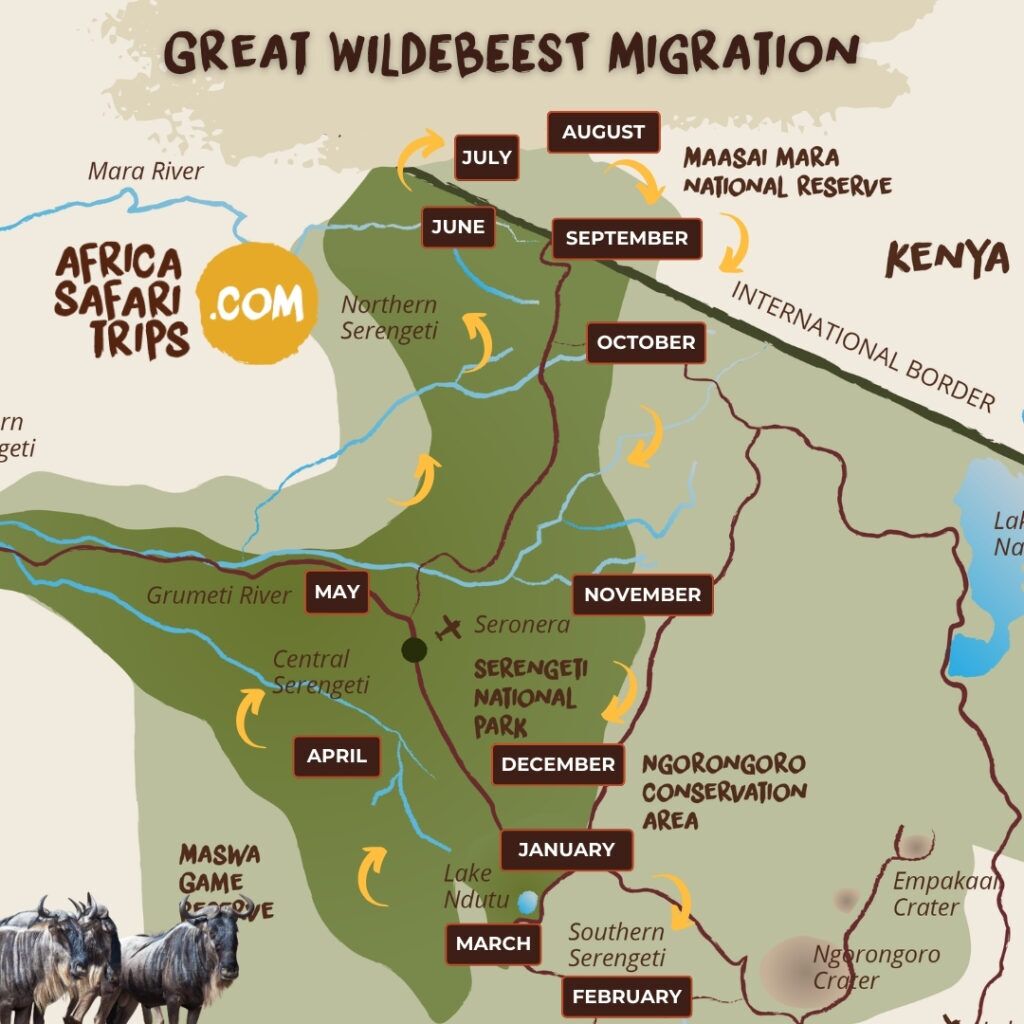

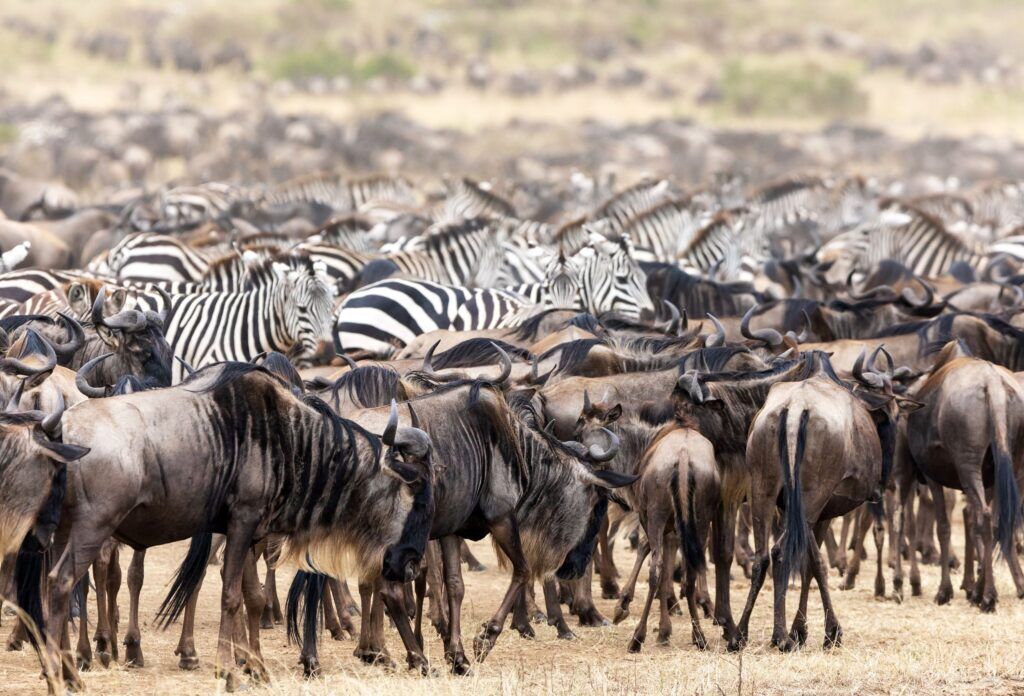
Would you like to witness the Great Wildebeest Migration in Kenya ? Check our Kenya Tours or contact us for a personal advice.
Let us create your tailor-made trip
Receive a free, no obligation quote
Start planning your dream trip